
by Stacey McCuaig | Jan 20, 2017 | Blog, Electricity Bill, Energy Reduction, hydro bill, MyEyedro
Prompted by popular “demand” for a means to capture electricity demand, Eyedro is pleased to announce the addition of the new Portfolio plugin to our MyEyedro electricity monitoring platform.
The Portfolio view allows the MyEyedro user to determine 30 Day Peak Demand selectable by date, Instantaneous Peak Demand, 24 Hour and 30 Day Consumption.
In order to activate the Portfolio plugin the user’s MyEyedro account must have at least 2 display groups. In the case where a user has only one Eyedro device, a duplicate display group can be created.
For more information on the Portfolio plugin see page 58 of the MyEyedro User Guide.
Electricity Demand Explained
Electricity Demand is the maximum amount of electricity being used at any given point in time. Demand fluctuates throughout the day. For example, in the morning as people get up and get ready for work, take showers, run their cappuccino machines, hair dryers or waffle makers, electricity demand increases. In the early evening there is a second period of peak demand as people arrive home from work, turn on lights and appliances, cook dinner, fire up computers, etc. The greater the electricity demand, the greater the strain on the electrical grid to supply that demand, which is why many utilities will charge the consumer more during times of peak demand (Time-of-Use electricity rates). Time-of-Use rates are intended to take some of the strain off the grid by encouraging conservation at times of peak demand.
30 Day Consumption View:
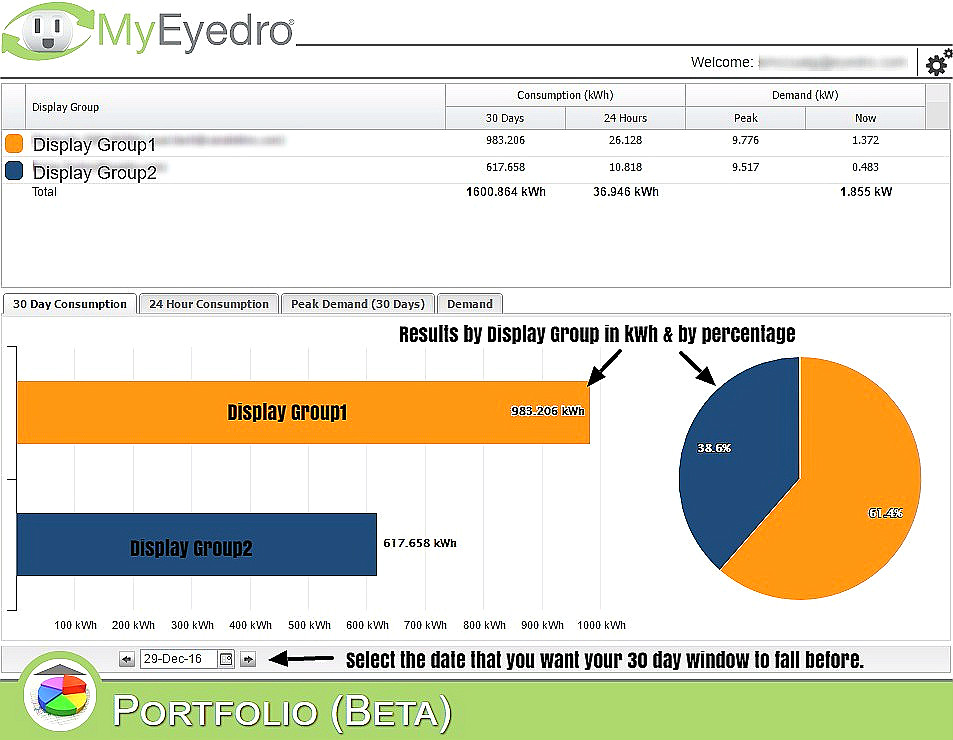
30 Day electricity Consumption Data
24 Hour Consumption View:
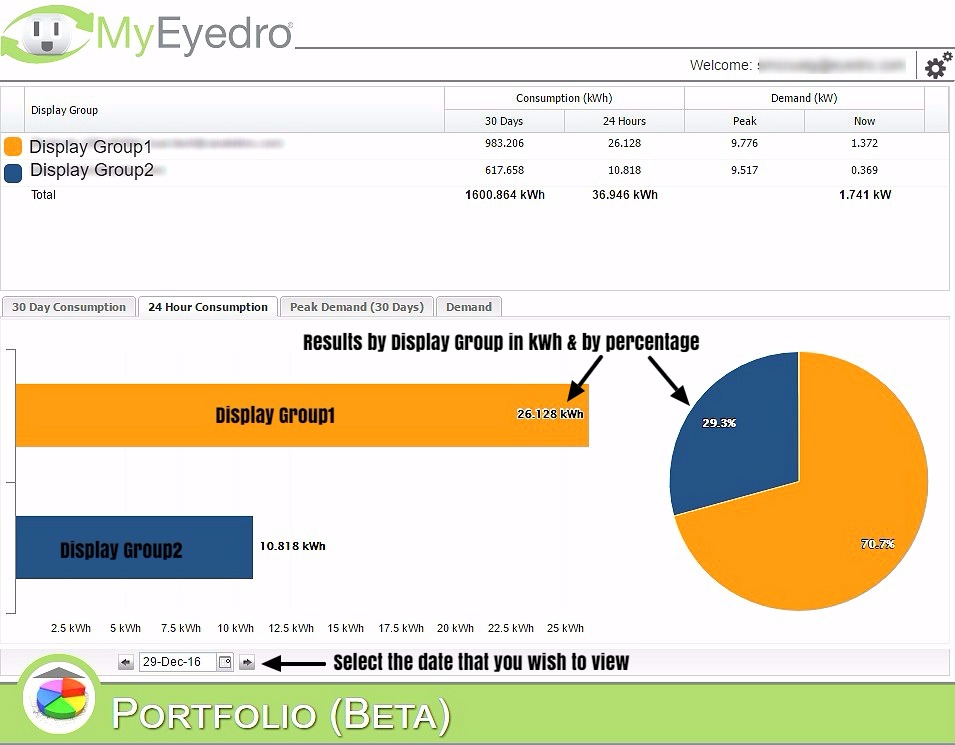
24 Hour Electricity Consumption Data
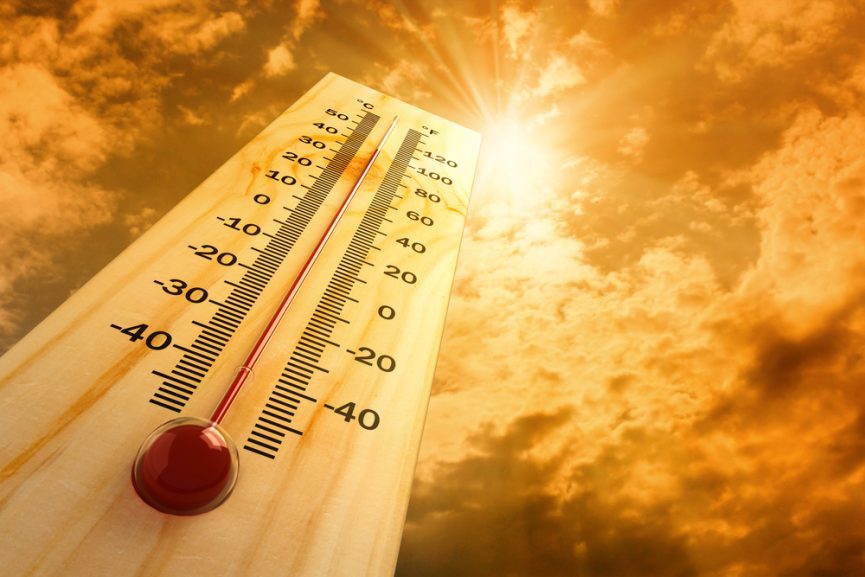
by Stacey McCuaig | Oct 6, 2016 | Blog, Electricity Bill, Energy Reduction
Let’s talk about energy savings. Those who live in Northern states immediately think of home heating costs in the winter. We may even forget (temporarily) how expensive it is to remove heat from your home in the summer.
In fact, most of the United States can be considered “hot” at some point during the year. Alaska, for example, might even see temperatures in the 90’s… as early as May!
It’s a serious matter, but not an insurmountable one…
Although we don’t all need to worry too much about freezing in the winter, we all need to understand the cost of keeping cool in the summer.
Home cooling accounts for 6 percent of the average home’s energy use. It’s important to be aware that this is an average. It’s a bit deceptive in that, it doesn’t reveal the sharp rise in costs over the hot summer months.
Defining Energy… More Than a Mental Exercise:
Let’s define energy as “anything that involves a change in the position or temperature of something you own”. This matters, because a clear definition helps expose things we would otherwise overlook. For example:
In the Summer:
- The Sun’s energy:
– Striking your kitchen tiles adds heat to the room
– Using air conditioning to remove that heat comes at a cost (the effect being a benefit in the winter) - Obstructions in HVAC conduits can add to energy consumption with air handling equipment
These are only a few examples of how energy can be wasted. One can occupy every moment of their free time chasing down ways to conserve energy, and still find a growing list of unfinished tasks. Having said that, what is a rational plan of action? How does one save energy, money, and maybe even the environment with a reasonable amount of effort?
Actually, it’s easier than it sounds. Here are a few opportunities to conserve energy during the hottest months of the year:
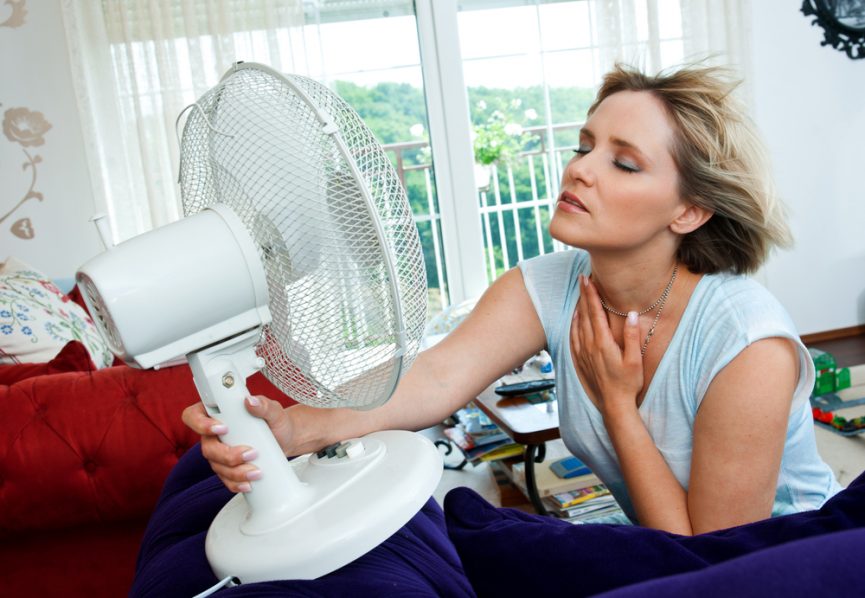
Conserving Electricity:
You may already be conserving electricity. Turning off lights in empty rooms, switching to LED lighting, and putting your computer in sleep mode when you leave your desk are common examples. Conserving electricity can be taken further. Here are a few more simple ideas to keep cool and conserve energy during the summer:
Being Mindful, (in moderation): Ask yourself how cool your house really needs to be. The approach to using programmable thermostats to cycle the furnace in the winter can also be used to do the same thing with cooling in the summer.
This is especially effective while you’re away on a trip. Try shutting it off altogether. It’s not like your sofa’s going to care if it’s 100 degrees in there. The only time you should reconsider is when humidity is an issue. A (mostly good) side effect of air conditioning is that it removes moisture from the air. Assess your situation and determine if the dehumidifier can do the job.
Window-mounted Air Conditioners: Focusing on only a portion of the house, presumably the part where you spend most of your time. It allows you to reduce energy consumption with some flexibility. – especially when you spend most of your time in one or two rooms of the house. The reason may simply be that you work from home. The office is where you spend the vast majority of your time during customary work hours.
Fans: Of course, you can ditch the air conditioning altogether and go with a fan. These consume a lot less energy than an air conditioner – mostly because you’re not actually removing heat from the room. Even when it’s 80 degrees, your body’s core temperature is higher. When air flows over your skin, you’re employing the principle of forced convection to carry heat away from your body. You’re also using the evaporation of moisture (perspiration) to remove heat from your body.
Be aware of the downside. If it’s really humid, or the temperatures are especially high (approaching 100 degrees), these processes are much less effective. In those situations, you could even put yourself in a wind tunnel without any satisfaction. Use temperature and relative humidity to make the best choices. If you’re not the scientific type, that’s OK too. You’ll know when a fan’s not effective. And now, you’ll know why!
Managing Heat Energy:
Heat energy can become trapped in the home, to the point that the inside of your house can be warmer than the air outside. It’s pretty common at dusk, when the temperature outside drops and your house didn’t drop as quickly.
In cases where you’re trying to match the temperature outside, you can expel heat from your home with an exhaust fan. Heat which is trapped in the upper floors can be sent outside while drawing cooler air from the lower floors. Remember to make a path for the airflow, with open windows downstairs and closed windows on the top floor with the fan. The only path leading outside your home should be through the fan.
Managing Appliances:
Some simple maintenance can go a long way toward reducing wear and tear on you appliances. It can also affect energy consumption and even reduce safety hazards. For example, checking your dryer exhaust for lint may reveal a partially clogged duct. Clearing the lint will improve efficiency and lower the risk of fire.
Your refrigerator is another example. The two main parts which work to transfers heat from the inside of your refrigerator to the outside are coils. They function in the same way as a radiator.
The evaporator: This is the part that becomes cold and absorbs heat from inside the refrigerator. It can collect ice which, in turn, insulates the coils, preventing it from absorbing heat. Be mindful about ice accumulating on this coil and remove it when it occurs.
The Condenser: This is the part that looks like a radiator. It delivers heat from inside the refrigerator by concentrating and transferring it to the surrounding air in your kitchen. They can accumulate dust, which makes heat transfer inefficient. It’s worthwhile to check it periodically and remove dust which accumulates on and around it.
Following these simple tips will start you on a path to a healthier, less expensive, and environmentally friendly lifestyle. Stay cool, and good luck!
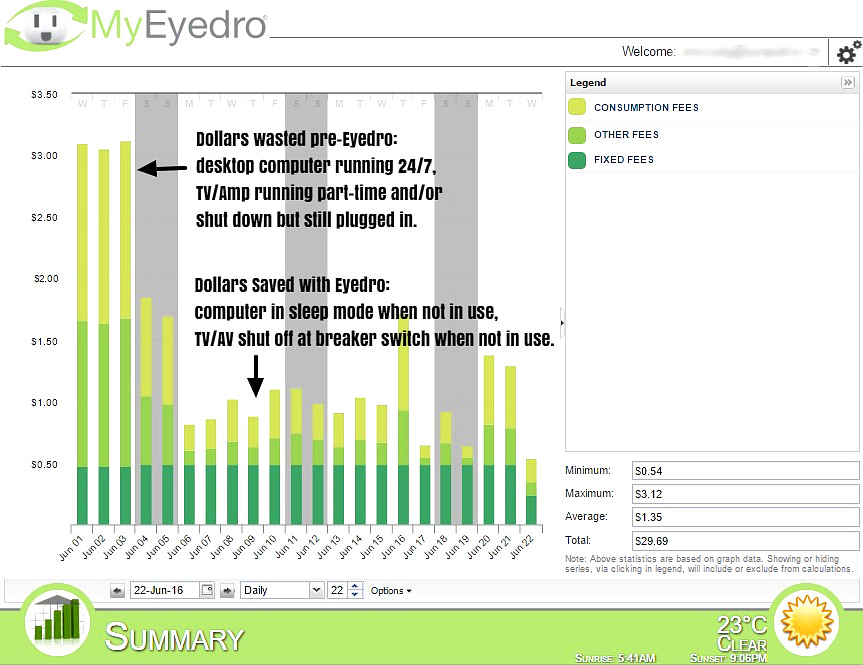
by Stacey McCuaig | Jun 27, 2016 | Blog, Customer Success Stories, Electricity Bill, Energy Reduction, MyEyedro
I, like most Ontarians (and Hydro users everywhere) have become more than a little bit disgruntled with the sharply rising cost of electricity. Every month we wait in trepidation for the arrival of the dreaded electric bill.
With the goal of energy reduction in mind, I decided to install an Eyedro Real-Time Electricity Monitor in a secondary breaker panel that powers my living room lights, outlets, and my desktop computer.
As a new Eyedro Electricity Monitoring Systems user I was shocked to discover how much electricity was being consumed by the gadgets in my home even when they weren’t actively in use.
Since the MyEyedro cloud based software offers real-time electricity monitoring, I was able to determine through experimentation (flicking switches, powering down appliances, turning breakers off and on) which of my devices was using the most power. It quickly became obvious who the main culprit was – the tower computer that lurks in the shadows under my desk, fans humming away night and day, red LEDs glaring defiantly, and using twice the electricity of anything else that I was monitoring with my Eyedro system!
For more on computer energy consumption here’s a great article from howtogeek.com – PSA: Don’t Shut Down Your Computer, Just Use Sleep (or Hibernation)
By making a few relatively painless adjustments, (and sending out gentle reminders to recalcitrant participants – I can see how much hydro you’re using even when I’m not home!) I have been able to almost immediately realize an overall cost savings of roughly 60% on the power usage that I am tracking with my Eyedro electricity monitoring system.
As the following graphs beautifully illustrate in both kWh consumption and dollar values, with Eyedro it really is possible to Keep an Eye on Your Hydro!

Eyedro Home Electricity Monitor: Daily Consumption in kWh

Eyedro Home Electricity Monitor: Daily Cost Savings






